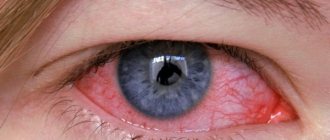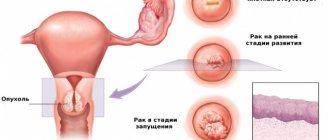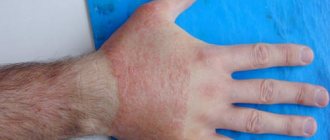History of the disease
To this day, it is not known exactly when smallpox appeared. It is believed that the virus of this disease evolved over a long period - from the 60th to the 16th millennium BC. Today, 2 clades of strains have been identified, each of which has its own history.
- The Variola major clade is more dangerous. It affected the inhabitants of the Asian continent throughout the 5th-16th centuries. AD
- The 2nd clade, Variola Alastrim minor, was described in America and isolated in West Africa. The separation of this group into a separate type of virus occurred sometime between the 15th century BC and the 7th century AD.
Until recently, it was believed that smallpox originated in ancient times. Its supposed homeland was Egypt, as well as China (according to scientists, in both countries this disease appeared in the 4th millennium BC). But thanks to modern genetic research, it has become clear that the disease first manifested itself in the Middle East in the first centuries of our era.
Truly massive epidemics of black smallpox first struck residents of Asian countries. Most affected:
- China (in the 4th century);
- Korea (VI century);
- India;
- Japan (737) - in that country there were the most terrible consequences; the number of patients was in the hundreds of thousands; in total, almost a third of the country's population died.
This disease came to the vastness of the European continent in the 6th-8th centuries. The first to suffer was Byzantium, where the smallpox virus was brought from Africa. The disease spread to other states due to the Arab conquests in the 7th-8th centuries. Among the countries in which manifestations of smallpox began to be recorded en masse, it is worth highlighting Italy, Spain, and France.
By the 15th century, this disease was raging throughout Europe. There was even a saying among doctors that any normal person should have smallpox at least once. In the 20s of the 16th century, a terrible virus was brought to America. Millions of people died from it; some Indian tribes died out completely.
By the 18th century, the disease had become so widespread that everyone knew its symptoms and possible consequences. Uninfected people have become a rarity; Almost everyone had a scar or several scars on their body, indicating an illness they had suffered. In France, when the police were looking for a suspect in a crime, one of the special signs was that the person did not show signs of smallpox.
Mass vaccination, which began in the 19th century, helped defeat this disease. Initially, only people of a specific profession (in particular, the military) were vaccinated against this disease. But later they began to introduce the life-saving drug into everyone’s body. On the African, Asian and South American continents, smallpox was completely defeated only in the second half of the 20th century.
Epidemiology of smallpox
The source and reservoir of the pathogen is the patient from the last days of the incubation period until complete recovery (patients pose the maximum danger from the 3-8th day of illness).
The mechanism of infection of smallpox is aerosol. Transmission of the pathogen occurs by airborne droplets or airborne dust. Transmission factors: virus-infected air, dust, underwear and bed linen. Infection through the conjunctiva or damaged skin is possible; in pregnant women - transplacental infection of the fetus. The corpses of those who died from smallpox also pose an epidemic danger. The natural susceptibility of people reaches 95%. After an illness, as a rule, stable immunity develops, but recurrent illness is also possible (in 0.1-1% of those who have recovered from the disease). Smallpox is a highly contagious disease. A high incidence rate with an epidemic nature and cyclical rises every 6-8 years was recorded in the countries of Africa, South America and Asia. Children aged 1-5 years were most often infected. In endemic countries, an increase in incidence was observed in the winter-spring period.
On October 26, 1977, the last case of smallpox was reported. In 1980, the WHO certified the eradication of smallpox worldwide. The WHO Committee on Orthopoxvirus Infections in 1990 recommended, as an exception, vaccination for researchers working with pathogenic orthopoxviruses (including variola virus) in specialized laboratories and in monkeypox outbreaks.
If patients with smallpox are identified or if the disease is suspected, regime-restrictive measures (quarantine) are established in full. Contact persons are isolated in a specialized observation unit for 14 days. For emergency prevention of smallpox, metisazone and ribavirin (virazol) are used in therapeutic doses with the simultaneous use of smallpox vaccine.
Etiology and pathogenesis
As mentioned above, the causative agents of this disease are viruses belonging to the Poxviridae family. Their sizes are 200-350 nm. Such infectious agents multiply within the cytoplasm; this process is accompanied by the formation of inclusions. A characteristic feature is that variola viruses and group A red blood cells are antigenically related. In this regard, people with this blood type have low resistance to infection, and therefore they get sick more often. Among them, a high mortality rate was also noted.
The pathogen is resistant to external factors. It is not afraid of drying and low temperatures. Scales, as well as crusts taken from the skin of patients, are an excellent habitat for the virus. He can live in them for several months. Even if the infectious agent is frozen, it will remain viable for several years.
Smallpox is part of anthroponoses. It belongs to the class of highly contagious and extremely dangerous infections. All people who lack immunity are susceptible to the disease. It is possible to obtain immunity in 2 ways: by contracting the disease or undergoing vaccination. In the modern world, this disease is widespread throughout the Asian and African continents.
Infectious agents enter the human body in several ways:
- airborne;
- in direct contact with the skin of patients;
- due to contact with contaminated objects and medical devices (100% transmission of infection occurs in the case of a cut).
Photos and documentary evidence indicate that an infected person is capable of transmitting the virus throughout all stages of the disease. Infection is possible both in the last days of incubation and during the period of crust rejection. The body of a person who died from this disease also poses a danger to others.
As a rule, infectious agents enter the body during respiratory processes. When a person inhales contaminated air, viruses settle in the respiratory tract. Much less often, transmission of infection occurs through the skin.
Next, the virus penetrates the lymph nodes. After this, infectious agents penetrate the blood and spread throughout the body. Hematogenous infection of the epithelium occurs. The deadly organism is rapidly multiplying. The immune system gradually weakens, the secondary flora is activated and the vesicles turn into pustules. As a result, the germ layer of the epidermis dies. A scar forms at the site of suppurative processes.
Sometimes the development of infectious-toxic shock is possible. The most severe forms of the disease are accompanied by the manifestation of hemorrhagic syndrome.
Routes of transmission
Of course, one of the important questions is how exactly smallpox is transmitted. The source of infection is a sick person. The release of viral particles into the external environment occurs throughout the entire period of the rash. According to research, the disease is most contagious in the first ten days after symptoms appear. It is worth noting that the facts of latent carriage of infection and the transition of the disease to a chronic form are unknown to science.
Since the pathogen is localized mainly on the mucous membranes of the mouth and upper respiratory tract, viral particles are released into the environment mainly during coughing, laughing, sneezing or even talking. In addition, crusts on the skin can also be a source of virions. How is smallpox spread? The transmission routes in this case are aerosol. It is worth noting that the virus is very contagious. The infection spreads to people who are in the same room with the patient, and often travels over fairly long distances along with the air current. For example, there has been a tendency for the virus to quickly spread in multi-storey buildings.
A person is very susceptible to this disease. The chance of infection when exposed to the virus is approximately 93–95%. After an illness, the body forms a strong immune system.
The main signs of the disease and its course
Like many dangerous diseases, smallpox occurs in several stages. After the infection enters the body, an incubation period begins, which lasts 1-2 weeks. At this stage, no symptoms appear.
The disease makes itself felt at the initial stage. A person suffers from:
- chills;
- elevated temperature;
- severe pain in the lumbar region, arms and legs;
- excessive thirst;
- systematic dizziness;
- headaches;
- constant vomiting.
Starting from the 2nd – 4th day, the symptoms become more pronounced. The skin becomes covered with an initial or hemorrhagic rash. Such signs appear on the chest, sometimes in the armpits. In addition, the area under the navel (groin folds, inner thighs) is affected. Hemorrhages become similar to purpura or ecchymosis. As for the spotty rash, it does not last long (up to a maximum of 5-6 hours); If we talk about hemorrhagic rash, then it remains on the body for up to several weeks.
Around the 4th day, smallpox enters a new stage. The symptoms characteristic of the initial period recede, but others take their place. In particular, the head, face, torso, arms and legs are covered with pockmarks. The pockmarks themselves also go through several stages:
- spot;
- papule;
- bubble;
- pustule;
- crust;
- rejection (at the same stage a scar forms).
In addition, pockmarks affect:
- nasal mucosa;
- oropharynx;
- larynx;
- trachea;
- bronchi;
- rectum;
- female genitals;
- urethra.
After some time, they turn into erosion.
From the 8th – 9th day the most difficult period begins. The blisters fester, which leads to a deterioration in the well-being of patients. At this stage the symptoms are as follows:
- consciousness is impaired;
- the person is often delusional;
- there is excessive arousal;
- convulsions begin (this deviation is mainly observed in small children).
The crusts may dry out and fall off within 7-14 days. Scars appear on the skin of the face, as well as on the scalp (every area where the crust was located will definitely have a scar).
This disease can have particularly severe forms. Of these it is worth highlighting:
- drain;
- pustular-hemorrhagic;
- smallpox purpura (it is characterized by profuse bleeding into the skin).
In the most severe cases, the patient may die before the rash develops.
If a person has been vaccinated against smallpox, the disease will pass in a very mild form. The incubation period will last slightly longer (up to 17 days). An easy course is characterized by the presence of:
- moderate weakness;
- small rash;
- short-term fever.
There are no scars left after recovery.
Chickenpox symptoms
The first symptoms of smallpox appear on average 14 days after contact with the sick person and resemble the symptoms associated with a cold; fever develops over time (37 ° C-40 ° C).
Chicken rash is characterized by itching that usually first appears on the torso and eventually spreads throughout the body. Pustules also occur in the nose or mouth, and less commonly on the lower legs and palms. The rash initially takes the form of red spots, which quickly turn into fluid-filled pimples. The latter dry out after a few days. This cycle lasts about 6 days.
Typical symptoms
In addition to blisters, many of the symptoms of chickenpox resemble those of a cold or flu. Other typical signs:
- diarrhea;
- fatigue, fever, sore throat, headache, cough;
- general malaise;
- itchy skin;
- a rash of fluid-filled blisters on the face and torso;
- runny nose and sneezing;
- scabs on the formed blisters.
Serious symptoms that may indicate life-threatening illness
Sometimes the chickenpox virus can spread to other areas of the body, such as the brain and lungs, especially in adults, who are more likely to develop complications.
Children are more likely to develop a secondary infection that affects the skin, lungs, circulatory system, joints and other parts of the body. Rarely, smallpox can lead to severe dehydration, especially when accompanied by diarrhea.
You should contact your doctor immediately if you have the following life-threatening symptoms:
- fainting;
- high body temperature (over 40 °C);
- confusion, delirium, drowsiness, hallucinations;
- Strong headache;
- lack of urination;
- distorted or slurred speech, inability to speak;
- respiratory problems such as shortness of breath, difficulty breathing, suffocation;
- severe dizziness or sudden loss of balance.
Diagnosis
Smallpox is detected through clinical testing. In special laboratories, the contents of elements that form on the skin are analyzed. In addition, blood and mucus smears taken from the patient's mouth are used. To determine whether there are virus cells in the samples taken, microprecipitation or electron microscopy is performed. In most cases, preliminary results are obtained within 24 hours. It always takes a little more time to reach an accurate verdict.
If doctors doubt a specific diagnosis, the test results are checked against electronic photos of previous studies.
What causes smallpox?
Smallpox is caused by the large DNA virus Orthopoxvirus variola of the Poxviridae genus Orthopoxvirus. The dimensions of brick-shaped virions are 250-300x200x250 nm. The virion has a complex structure. On the outside is a membrane that forms when leaving the cell. The outer lipoprotein membrane, including glycoproteins, collects in the cytoplasm around the core. The nucleoprotein complex, enclosed in the inner membrane, consists of proteins and one molecule of double-stranded linear DNA with covalently closed ends.
How to treat this disease?
Since today smallpox is officially considered a conquered disease, vaccinations against it are not given. But if it turns out that the disease is revived, and photos of patients from the outbreaks of the epidemic coincide with the appearance of a modern patient, the person will immediately be subject to hospitalization and isolation. Blood and mucus samples will be taken from him for testing. If tests confirm the presence of a terrible infection, the following actions will be taken:
- the patient will be prescribed antiviral drugs (for example, metisazone);
- Intramuscular injection of anti-smallpox immunoglobulin will be carried out systematically;
- the affected areas of the skin will be treated with antiseptic agents;
- the patient will be prescribed antibiotics with a broad spectrum of action (for example, macrolides);
- a set of operations will be performed to detoxify the body (for example, the patient will be given colloid and crystalloid solutions).
If there are any complications, photos, as well as documentary information from previous years, can be used. This will help compare the present symptoms with previous cases of smallpox. This way, doctors will be able to accurately determine the extent of the disease and take the necessary measures to save the patient.
Treatment
Treatment of smallpox is based on the use of antiviral drugs (in particular, metisazone is used, a course of up to 6 days, twice a day in a dose of 0.6 g), as well as anti-smallpox immunoglobulin (intramuscular, dose from 3 to 6 ml.). In general, a highly effective drug that could be used as part of etiotropic treatment has not been created until now, and the therapeutic effectiveness of these drugs is quite low.
As a preventive measure to prevent a bacterial infection from joining the disease picture, which in particular concerns the affected areas of the skin, antiseptics are used. Current bacterial complications require the patient to be prescribed broad-spectrum antibiotics, which in particular can be cephalosporins, semi-synthetic penicillins and macrolides. Detoxification of the body is ensured through the implementation of measures in the form of the use of crystalloid and colloid solutions, plasmaphoresis and ultrafiltration (in some cases). If itchy skin occurs, the skin can be treated with vinegar or alcohol.
Regarding the prognosis, we can say that it is determined on the basis of the clinical form of the disease, the general condition of the patient within the premorbid period (the initial state of the patient, before the onset of the disease, is considered as such a condition). Mortality rates range from 2-100%. The mild course of the disease determines a favorable prognosis for those patients who have been vaccinated. Convalescents, i.e. recovered patients are subject to discharge from the hospital after they have, accordingly, clinical recovery, but not earlier than forty days from the onset of the disease.
After suffering from mild forms of the disease, discharge is made without any adjustments in terms of suitability for military service, while the transfer of severe forms requires a decision regarding this issue on the part of the Military Military Commission, taking into account the corresponding residual phenomena (i.e., phenomena that are relevant after the transfer diseases, in particular, changes in vision due to smallpox, etc. are considered here).
Prevention
It is enough to look at the photo once to understand how terrible a disease smallpox is. And although no one has been sick with it for almost 40 years, precautions must be taken.
If you have immunity, it is almost impossible to become infected, but if the disease does appear, it is important to prevent its spread. You should immediately seek help from a doctor and undergo a course of treatment. Similar actions should be taken if there has been direct contact with an infected person or a person suspected of having smallpox.
To localize the infection, a 17-day quarantine is prescribed (this is the minimum period). During the same period, the patient is vaccinated. During the course of treatment, the infected person’s room, dishes and household items that he uses are systematically treated with special solutions (Lysol, chloramine). Any garbage is not thrown away, but burned. After discharge, the patient's room is cleaned again.
Complications
They can occur in 1 vaccinated person per 10 thousand patients. Primarily associated with skin diseases. Contraindications include pregnancy, autoimmune diseases, and eye inflammation. Severe complications include encephalitis (1:300,000), eczema, myocarditis, pericarditis, and rash of non-infectious origin. However, vaccination will prevent or significantly reduce the severity of the disease. It is recommended for all family members of the patient and contact people for whom quarantine is established for at least 17 days.
Does the virus need to be saved?
However, despite the existing threat of infection by laboratory strains, the remaining collections continue to be preserved. After all, this material is absolutely unique! In particular, according to the latest results of sequencing (decoding) the smallpox virus, it turned out that it contains special proteins that can actively influence the immune reactions of the human body. It is expected that further research will help resolve a number of issues related to the development of infectious processes.
But the most important thing is that with the destruction of an entire type of virus in nature, a peculiar chain that has developed over thousands of years is interrupted. But each species plays its own strictly defined role in the overall natural balance.
And since infectious diseases are global natural mechanisms of regulation, something new will immediately appear in place of the formed niche. Thus, there is an assumption that the smallpox virus has already been replaced by an even more insidious AIDS virus (HIV). And while these global processes are not fully understood, it was decided not to rush into destroying the remaining smallpox collections.
At the same time, according to many experts, some countries are actively developing all kinds of biological weapons in secret laboratories. And it is possible that smallpox viruses can become one of the most effective means of conducting biological warfare, as well as bioterrorism.











